 Ronald Aug . March 20
Ronald Aug . March 20
Adsense And YouTube Partner Program
Ad Types and Formats

Bumper ads and Sponsored cards
Bumper ads
A Bumper ad is a short video ad format that has a maximum duration of 6 seconds. It plays before, during, or after a viewer's selected video and cannot be skipped. According to YouTube, bumper ads are designed to help brands reach a wider audience, boost brand recall, and increase message frequency.
-
Bumper ads contribute to an average 30% lift in brand awareness and a 9% lift in ad recall .
-
Bumper ads work best when combined with other ad formats, as they help reinforce the advertiser's message .
-
Do: Keep the message simple, direct, and deliver it within the first few seconds.
-
Don't: Try to cram too much information into 6 seconds. Focus on one central idea or message.
Sponsored cards
Sponsored cards are an interactive and discreet advertising format that can appear in YouTube videos. They show up as small teasers, which can be clicked or tapped to reveal additional information about the advertised product or service. Sponsored cards are designed to help creators generate revenue by promoting relevant products and services within their content.
-
Sponsored cards deliver a 7% higher click-through rate (CTR) compared to other ad formats .
-
They produce 11% more revenue per impression for YouTube creators .
-
Do: Choose products and services that are relevant to your content and audience. This increases the likelihood of engagement and conversion.
-
Don't: Overcrowd your video with too many sponsored cards, as it may result in a poor user experience and lower engagement rates.
By leveraging bumper ads and sponsored cards effectively, YouTube creators can not only drive higher engagement, but also diversify their revenue streams and make their content more appealing to potential sponsors. Understanding these ad formats and best practices can be a crucial step towards mastering the YouTube ecosystem.
Display ads and Overlay ads
Display Ads
Display ads are a type of ad format that can appear on the right-hand side of YouTube's desktop video watch pages. These ads can be in image or GIF format and can be a static or animated image. Here are some key points to keep in mind while creating display ads:
- Dimensions: 300x250 pixels
- File formats: JPEG, PNG, or GIF
- Supported devices: Desktop only
- Available targeting: By placement, keyword, topics, and audience
- Frequency capping and exclusions are available
Do's
- Keep your ad and visuals high-quality and professionally designed
- Ensure a clear call-to-action (CTA) is visible
- Use the available targeting options strategically to reach the desired audience
- Test multiple ad variants for better performance
Don'ts
- Don't use low-resolution images or unclear visuals
- Don't use text-heavy ads that become difficult to read at a smaller size
- Avoid using complex animations or visuals that are not meaningful
Overlay Ads
Overlay ads are another ad format that can appear as a semi-transparent banner on the bottom 20% of a YouTube video, appearing on both desktop and mobile devices. Overlay ads use textual and/or visual elements to make your ad stand out. Here's an overview of overlay ads:
- Dimensions: 480x100 pixels (for desktop) or 320x50 pixels (for mobile)
- File formats: JPEG, PNG, or GIF
- Supported devices: Desktop and mobile devices
- Available targeting: By placement, keyword, topics, and audience
- Subject to YouTube's Overlay Ads Quality Guidelines
Do's
- Keep your ad and visuals simple and clear, considering the smaller ad space
- Use a strong, short, and relevant message or CTA
- Ensure any text is legible on both desktop and mobile devices
- Test different messages and ad variants to determine the best-performing ads
Don'ts
- Don't clutter the ad with too many elements or text
- Don't use overly bright colors that might disrupt the viewer experience
- Avoid placing critical information near the edges of the ad, as it may be covered by video controls or cut off on certain devices
By strategically using display and overlay ads, you can effectively reach your desired audience and enhance your YouTube advertising campaign. If you're looking to improve your skillset on YouTube content creation, consider exploring resources like online courses and educational resources to learn more about how to make YouTube videos.
Overview of YouTube Ad Types
As part of your YouTube strategy, understanding the various ad types available on the platform is essential. In this section, we'll provide a comprehensive overview of the different ad formats, their features, pros and cons, as well as some best practices to optimize your advertising experience.
TrueView Ads
TrueView ads are the most common ad format on YouTube. They are designed to give viewers a choice, allowing them to skip the ad after 5 seconds if they are not interested in the content. TrueView ads come in two formats:
In-Stream Ads
In-stream ads play before, during, or after a viewer's selected video. Advertisers are charged on a Cost-Per-View (CPV) basis, meaning you only pay when a viewer watches at least 30 seconds of the ad (or the entire ad if it's shorter) or clicks on the ad.
Discovery Ads
Discovery ads, previously known as In-Display ads, appear as a thumbnail and text alongside search results, in YouTube's "Related Videos" section, or on the homepage of the YouTube mobile app. Advertisers are charged when viewers click on the thumbnail, leading them to watch the ad or the promoted video.
Bumper Ads
Bumper ads are 6-second, non-skippable videos that play before a viewer's selected video. These ads aim to capture the viewer's attention quickly and convey a concise message. Bumper ads are charged on a Cost-Per-Thousand (CPM) basis, meaning you pay for every 1,000 ad impressions.
Non-skippable In-Stream Ads
Non-skippable in-stream ads can last up to 15 seconds and appear before, during, or after a viewer's selected video. As their name suggests, viewers are unable to skip these ads. This format is charged on a CPM basis.
Sponsored Cards
Sponsored cards are a type of ad format that offers a non-intrusive way for advertisers to promote relevant products or content. They appear as small clickable icons within a video, and when clicked, expand into a larger card containing more information.
Masthead Ads
Masthead ads appear at the top of the YouTube homepage and showcase a prominent ad placement with additional media components, such as video and images. This ad format is usually reserved for high-budget advertisers and is charged on a flat fee (per day) basis.
Overlay Ads
Overlay ads are semi-transparent banner ads that display at the bottom of a video, covering approximately 20% of the video frame. They are available to desktop users only and are charged on a Cost-Per-Click (CPC) basis.
Here are some general do's and don'ts to consider when planning and managing your YouTube ad campaigns:
- Do: Choose the appropriate ad format based on your goal and target audience.
- Do: Test different ad formats and targeting strategies to find the best combination for your brand.
- Do: Measure and analyze ad performance to improve your campaigns.
- Don't: Rely on just one ad format or creative – diversify your advertising efforts for the best results.
- Don't: Overload your viewers with ads – ensure a balance between ad frequency and viewer experience.
Ad Types and Formats > Skippable and Non-skippable video ads
Skippable Video Ads
Skippable video ads, also known as TrueView in-stream ads, are a type of YouTube ad format that allows viewers to skip the ad after the first 5 seconds if they wish to do so. Advertisers only pay for the ads when viewers watch at least 30 seconds or the entire ad (if it's shorter than 30 seconds), or when viewers interact with the ad (e.g., click on a call-to-action).
- 76% of viewers skip ads by default.
- Viewers are 2x more likely to watch skippable video ads if they feature elements from the main content.
Do's:
- Keep your ad concise and engaging to retain viewer attention.
- Use the first 5 seconds wisely to hook viewers.
- Include strong call-to-actions or interactive elements to encourage clicks.
Don'ts:
- Extend your ad unnecessarily to fit the 30-second mark, as skippable ads can be any length.
- Rely solely on visuals; include audio to engage viewers.
Non-skippable Video Ads
Non-skippable video ads, also known as pre-roll or mid-roll ads, don't allow viewers to skip the ad. These ads can be up to 15 seconds long, and advertisers pay every time the ad is played.
- Non-skippable video ads have higher view-through rates compared to skippable ads.
- Viewers are 3x more likely to pay attention to non-skippable ads versus skippable ads.
Do's:
- Keep your ad short and sweet, as it can't be longer than 15 seconds.
- Deliver a clear message, since you have limited time to convey information.
- Test different ad variations to see which has the best performance.
Don'ts:
- Overload your ad with too much information, as it may confuse viewers.
- Use clickbait tactics that don't relate to your content, as this can mislead viewers and lead to poor engagement.
For more in-depth information and strategies on creating effective YouTube videos, check out this article on how to make YouTube videos.
Adsense Account Setup and Management
- Payment options
- Payment thresholds
- Creating an Adsense account for YouTube Monetization
- Tracking Adsense performance and earnings
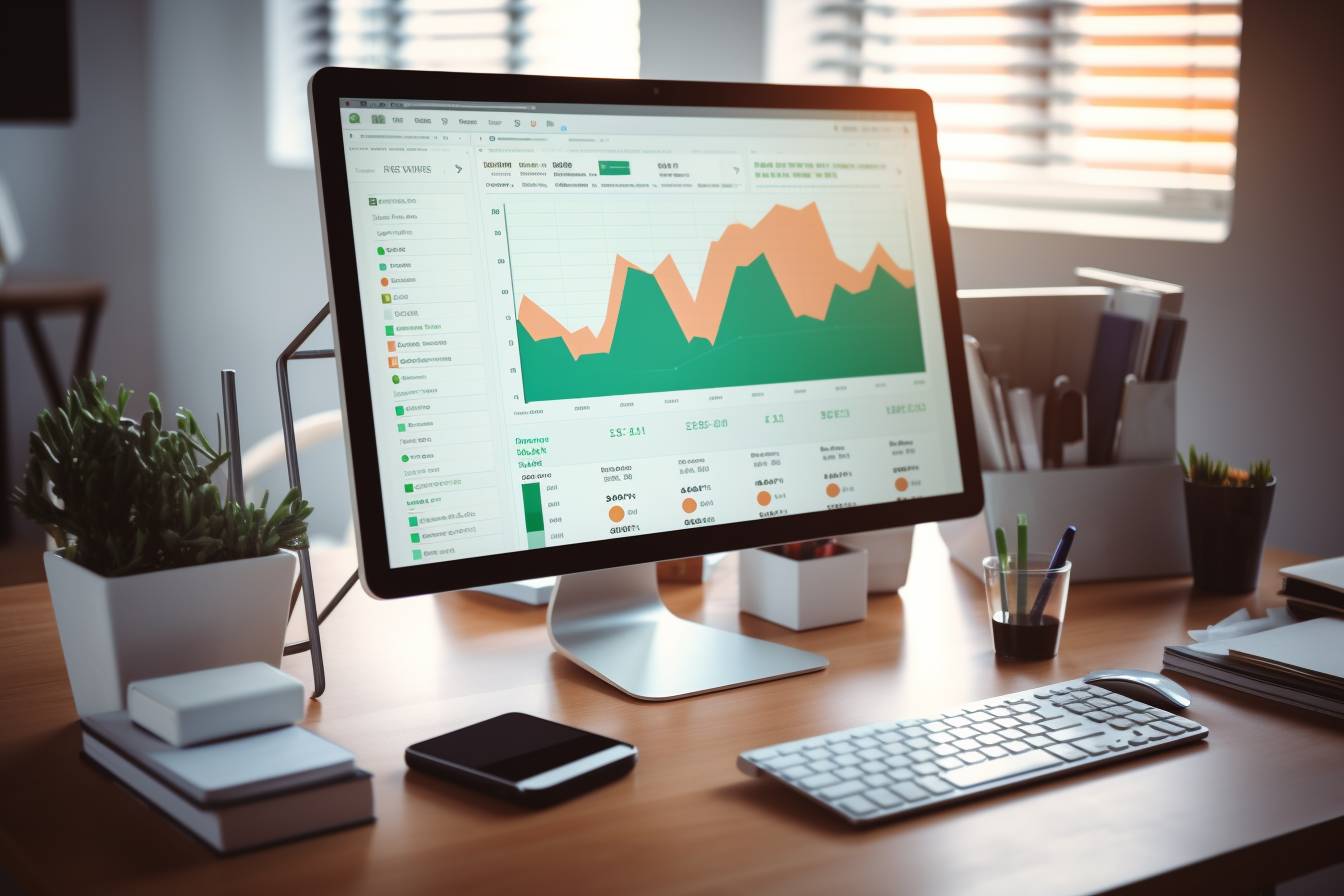
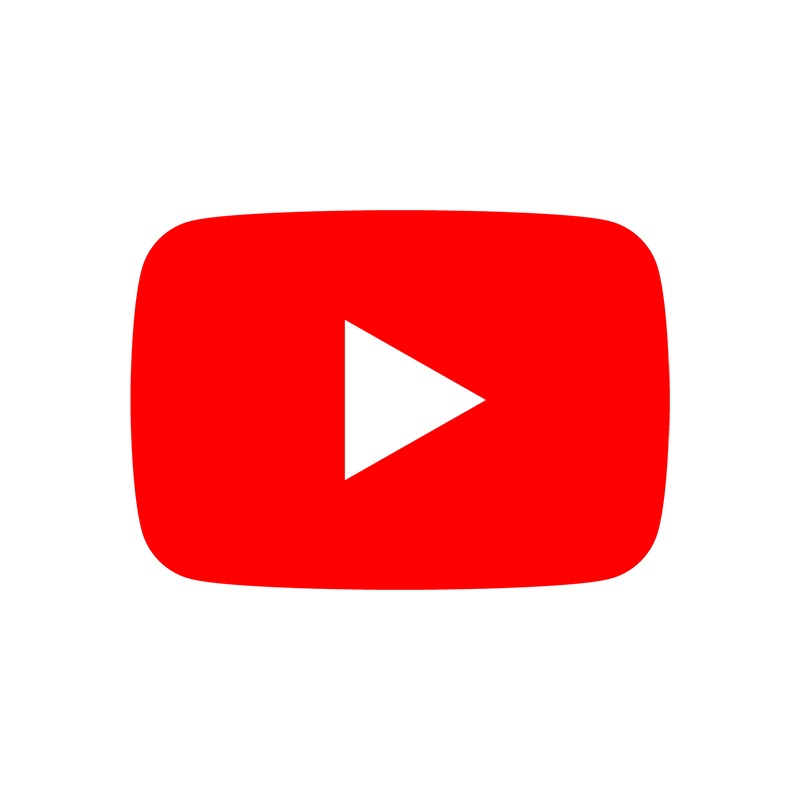
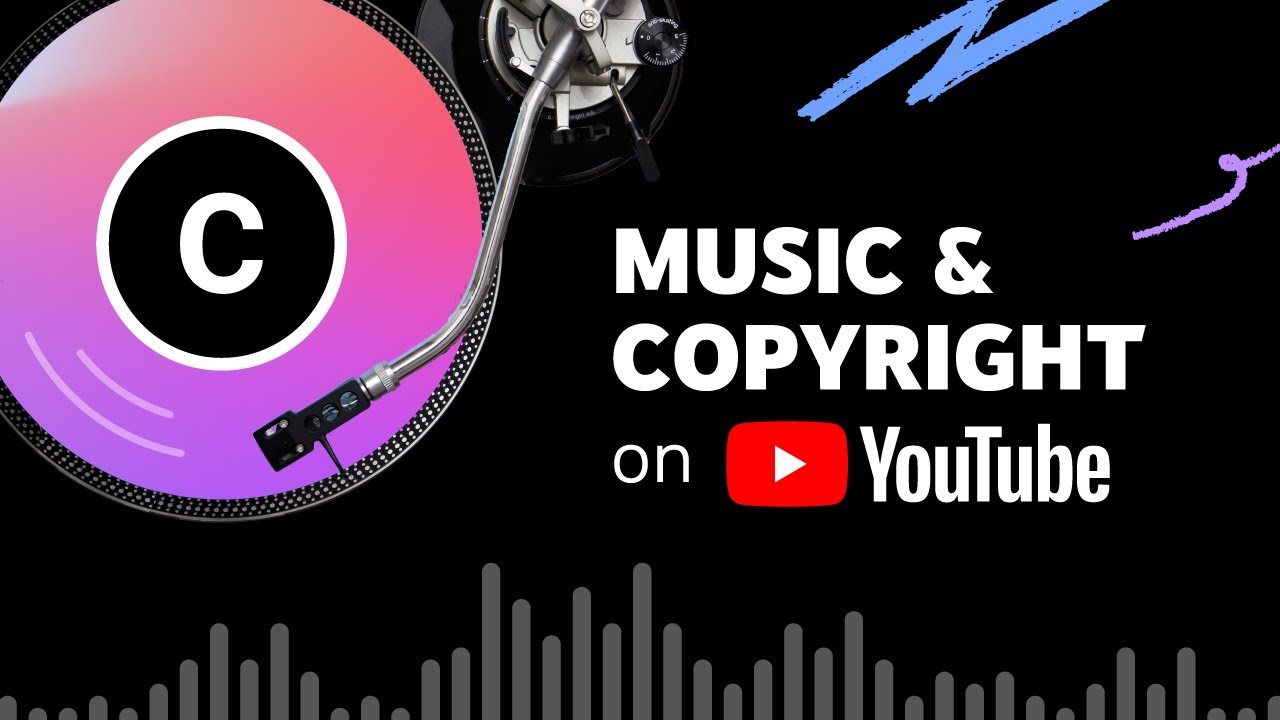 YouTube Creators
YouTube Creators
Adsense Payment Options and Thresholds
Welcome to the heading section 'Adsense Payment Options and Thresholds' which is a part of the course 'YouTube 3. Adsense Account Setup and Management.' In this section, we'll cover various payment options available for YouTube creators and the different threshold levels for eligibility.
Payment options
YouTube creators have several payment options when it comes to receiving their AdSense revenues. Below are the four primary payment methods supported by AdSense:
-
Electronic Funds Transfer (EFT): This is the most common and recommended method to receive payments. Funds are directly transferred to the bank account provided by the creator, which takes around 2-5 business days.
-
Wire Transfer: This option involves transferring payments directly to the creator's bank account as well. However, the processing fee for wire transfers might be higher compared to EFT, and it may take between 3-10 business days to complete.
-
Check: As an alternative to electronic payment methods, creators can receive a physical check mailed to their address. This process may take longer, around 2-3 weeks for delivery and additional time for bank clearance.
-
Western Union Quick Cash: For eligible countries, AdSense supports receiving payments via Western Union. It's a quick and reliable option for creators, but additional identification documents may be needed to pick up the funds from a Western Union agent.
Payment thresholds
Before YouTube creators can withdraw their AdSense earnings, they need to cross a certain earnings threshold. Following are the key thresholds for the AdSense account:
-
Verification Threshold: The verification threshold is set at $10 or equivalent in your local currency. Once the creator's earnings reach this level, AdSense will send a Personal Identification Number (PIN) to the mailing address registered in the account. Creators need to enter this PIN in their AdSense account to verify their address and then, continue receiving payments.
-
Payment Threshold: The payment threshold refers to the minimum earnings required to receive a payment. The standard threshold is $100 or equivalent in the creator's local currency. However, this value may vary for countries with different tax requirements.
-
Cancellation Threshold: The cancellation threshold is applicable if a creator decides to close their AdSense account. Earnings at or above 10 USD, EUR, or GBP (depending on the account's currency settings) must be withdrawn before closing an account.
It is essential to set up and manage your AdSense account correctly to ensure you receive your hard-earned revenue. To get more insights into YouTube content creation, you might be interested in the course on how to make YouTube videos.
##[//]# (Image URLs, metadata tags)
Adsense Account Setup and Management
Creating an Adsense account for YouTube Monetization
Setting up an Adsense account is a crucial step in monetizing your YouTube channel. In this section, we'll discuss the steps to create an Adsense account, requirements for YouTube monetization, and best practices in managing your account.
According to YouTube, there are specific requirements that creators must achieve before monetizing their channels:
- A channel must have at least 1,000 subscribers
- Watch time must be a minimum of 4,000 hours in the past 12 months
Once these requirements are met, a creator can enroll in the YouTube Partner Program.
Table - YouTube Monetization Requirements
| Requirement | Target |
|---|---|
| Subscribers | ≥ 1,000 |
| Watch time (past 12 months) | ≥ 4,000 hours |
Account Setup
Follow these steps to create an Adsense account for YouTube monetization:
- Sign in to your YouTube account
- Click on the profile icon in the upper right corner
- Go to "YouTube Studio"
- In the left-hand sidebar, click "Monetization"
- Click "Start" to apply for the YouTube Partner Program
- Complete the four steps in the application process
- When you reach the step titled "Sign Up for Google AdSense," click "Start"
- Fill out the required information and submit your Adsense application
Best Practices
Keep these do's and don'ts in mind to effectively manage your Adsense account:
Do's:
- Always follow YouTube monetization and content policies and AdSense program policies
- Regularly review and optimize ad placements, video categories, and targeting settings
- Keep your AdSense account information up-to-date
- Learn from websites for YouTube creators and stay informed with the help of YouTube newsletters
Don'ts:
- Do not click on your own ads or ask others to do so - this is a violation of AdSense policies
- Do not misuse copyrighted material, as this can lead to a YouTube copyright strike
- Avoid creating content that violates YouTube's policies regarding spam, misleading metadata, and harmful or dangerous actions
By understanding the requirements for YouTube monetization, correctly setting up an Adsense account, and following best practices, creators can take advantage of YouTube's monetization opportunities. For further assistance in creating content, consider resources on how to make YouTube videos.
Linking Adsense to your YouTube channel
Importance of linking Adsense to YouTube
Google Adsense is a vital tool for monetizing your YouTube channel. By linking your Adsense account to your YouTube channel, you can start earning revenue from ads displayed on your videos. According to Social Blade, the average earnings per 1,000 video views with Adsense range between $0.25 and $4.00. With this assistance, you can invest in better video production, such as quality video editing software and equipment, to improve the quality and attractiveness of your content.
In the following sections, we discuss the step-by-step process of linking your Adsense to your YouTube channel and managing the account.
Creating an Adsense account
Before linking Adsense to your YouTube channel, you must have a Google Adsense account. If you do not have one, follow these steps:
- Visit the Google Adsense website and sign up using your Google account.
- Fill in the required personal and tax information.
- Verify your contact details and provide your website or blog URL.
After Google reviews your account, you will receive a notification on whether your Adsense account was approved or not.
Linking Adsense to your YouTube channel
Once you have an Adsense account, follow these steps to link it to your YouTube channel:
- Log in to your YouTube account and go to your channel dashboard.
- Click the "Monetization" tab under the "Channel" section.
- In the "Monetization" page, click "Start" next to "Sign up for Google Adsense."
- You will be guided through a series of prompts to set up your Adsense account or link an existing one.
- Complete the on-screen instructions, and your account will be reviewed by the Youtube Partner Program. Once approved, ads will start running on your videos.
Managing Adsense account
Proper management of your Adsense account ensures you track your earnings and growth. Here are a few tips to manage your Adsense account effectively:
Do's:
- Track your earnings and overall performance using the Adsense dashboard.
- Set up ad blocking rules to prevent inappropriate ads from appearing on your videos.
- Ensure compliance with Google's AdSense policies, such as not clicking on your ads or encouraging others to do so, as it may lead to account suspension or termination.
- Stay up to date with the latest Youtube monetization requirements and trends by subscribing to YouTube creator news and websites.
Don'ts:
- Ignore changes in your earnings and performance, as it may point to underlying issues or potential growth opportunities.
- Neglect to update your payment and tax information, as it may cause delays in processing your earnings.
Analyzing Adsense earnings and growth
To grow your YouTube channel and increase your Adsense earnings, you need to analyze your data and performance. Here are some tips on analyzing your earnings and growth:
- Keep track of your estimated earnings in the Adsense dashboard.
- Note changes in your CPM (cost per thousand) and try to identify the factors affecting it (e.g., seasonality, content quality, audience demographics).
- Use YouTube Analytics to identify trends, strengths, and weaknesses in your videos to drive better performance.
By following these tips, you can optimize your YouTube content to maximize your Adsense earnings and grow your channel further.
Adsense Account Setup and Management
Tracking Adsense performance and earnings
It is crucial for YouTube creators to track the performance and earnings of their AdSense account to make informed decisions and grow their channel. In this section, we will discuss effective methods for tracking AdSense performance, as well as important metrics and tools to keep track of your earnings.
-
Estimated Earnings: AdSense provides creators with estimated earnings, which include ad revenue and other earnings. Keep track of these figures to determine how well your content is monetizing.
-
Page RPM (Revenue per Mille): This metric informs you of the estimated income per thousand views. Understanding this metric is crucial for gauging your video's potential to generate revenue.
-
Ad Impressions: Identifies the number of times an advertisement was displayed. By understanding ad impressions, you can assess how well a video is monetizing.
-
Click through Rate (CTR): The number of clicks on ads divided by ad impressions. A higher CTR often indicates well-performing advertisements.
b) Using Google Analytics and other tools
-
Connect your AdSense account with Google Analytics to gain further insights into your video performance and earnings.
-
Use third-party tools, such as Social Blade and VidIQ, to track your YouTube channel growth, audience engagement, and monetization.
c) Tips for tracking your AdSense performance
To effectively track your AdSense performance, consider the following tips:
-
Set realistic goals and regularly check your performance against them for continuous improvement.
-
Identify patterns or trends in your video performance by conducting a comprehensive analysis of your channel metrics.
-
Monitor and compare the performance of your videos against other keywords for YouTube to identify areas for improvement or successful strategies.
Do's:
-
Regularly review your AdSense performance and earnings to make informed decisions about your content strategy.
-
Establish and maintain a consistent uploading schedule to improve your channel growth.
Don'ts:
-
Do not manipulate or inflate your ad impressions using bots or deceptive techniques, as it may lead to account termination.
-
Do not become too reliant on AdSense earnings alone. Consider exploring other monetization opportunities, such as sponsorships, Patreon for YouTube, and merchandise sales.
Remember, effectively tracking your AdSense performance and earnings is critical to the growth and success of your YouTube channel. By keeping a close eye on these metrics and employing best practices, you can make informed decisions and maximize your channel revenue.
Eligibility and Enrollment in the YouTube Partner Program
- Maintaining Eligibility and Reapplication
- The basics of the YouTube Partner Program
- What is Google AdSense?
- Partner Program and AdSense


 YouTube Creators
YouTube Creators
Maintaining Eligibility and Reapplication
Maintaining Eligibility
Once you have been accepted into the YouTube Partner Program (YPP), it's important to maintain your eligibility to ensure continuous access to the program's benefits. Keep in mind the following aspects of ongoing eligibility:
-
Monetization Criteria: Ensure your channel meets YouTube's monetization criteria, including having at least 1,000 subscribers and 4,000 watch hours in the past 12 months.
-
Adherence to Policies: Consistently follow YouTube's Community Guidelines, Terms of Service, and copyright policies. Channels that receive too many policy violations may lose their eligibility for YPP.
-
Active Channel Management: Actively engage with your audience by regularly uploading new content and replying to comments to maintain a strong presence on the platform.
-
Content Quality: Produce high-quality, original content that adds value for your viewers and adheres to YouTube's content guidelines.
-
Communication with YouTube: Always stay updated with YouTube's announcements and notifications through the YouTube Creator Studio dashboard and YouTube newsletters.
Reapplication for the YouTube Partner Program
If your channel falls out of compliance with the eligibility requirements or is removed from the YPP due to violations, you may be eligible to reapply. Here's what to consider when reapplying:
-
Review Eligibility Requirements: Carefully review and understand the eligibility requirements for the YPP, including monetization criteria, content guidelines, and policies.
-
Fix Issues: Identify and resolve any issues that led to your channel being removed or losing eligibility. This may include removing or updating content that violates YouTube's guidelines or policies.
-
Wait Period: YouTube typically requires a 30-day waiting period before you can reapply for YPP. This time can be used to improve your channel's compliance and make necessary changes.
-
Reapply: Once the waiting period is over and any issues have been addressed, submit your application through the YouTube Creator Studio. YouTube will review your channel to ensure it meets the eligibility requirements.
-
Be Patient: The review process for reapplying to YPP can take several weeks. Continue to focus on producing quality content and engaging with your audience during this time.
By understanding and adhering to YouTube's eligibility requirements and policies, as well as regularly maintaining your channel, you can ensure your ongoing participation in the YouTube Partner Program and continue to grow your audience and revenue.
Eligibility and Enrollment in the YouTube Partner Program
Requirements for eligibility
Eligibility for the YouTube Partner Program (YPP) is essential for creators looking to monetize their content and grow their channels. This comprehensive guide will outline the requirements for eligibility, ensuring creators are knowledgeable about the necessary steps to join and succeed in the YPP.
a) Numerical requirements
-
1,000 subscribers: A minimum of 1,000 subscribers is required to join the YPP. This number helps ensure that creators have an established audience for their content.
-
4,000 watch hours: Creators must have a minimum of 4,000 public watch hours in the past 12 months to be eligible. Watch hours demonstrate an engaged and invested audience, which is crucial for advertising revenue.
b) Policy compliance
Creators must adhere to YouTube's monetization policies, which include following the Community Guidelines, Terms of Service, and Google AdSense Program policies. Furthermore, creators need to ensure they comply with copyright laws to avoid receiving a YouTube copyright strike.
c) Adsense account
Every creator aiming to enroll in the YPP must have a linked and approved AdSense account. AdSense manages the revenue generated through the program, and creators should carefully read and follow its policies, terms, and conditions.
d) Location
The YPP is available for creators in specific locations. YouTube maintains a list of these eligible countries, which creators should refer to before applying.
e) Evaluation
Lastly, to confirm eligibility, YouTube will evaluate the creator's channel for compliance with YPP policies and guidelines. This process can take a few weeks, during which creators should continue building their audience and following the platform's policies.
For more guidance on producing high-quality content and optimizing your videos, check out our resources on how to make YouTube videos and successfully grow your channel.
Eligibility and Enrollment in the YouTube Partner Program
The Application Process and Timeline
Statistics
-
The YouTube Partner Program (YPP) requires a minimum of 1,000 subscribers and 4,000 hours of watch time within the past 12 months to be eligible.
-
95% of YouTube channels do not meet these YPP requirements.
-
Creator retention rate on YouTube is about 10% after their first year.
| Requirement | Threshold for Eligibility |
|---|---|
| Subscribers | 1,000 |
| Watch Time (Past 12 Months) | 4,000 Hours |
Eligibility requirements for the YouTube Partner Program:
- Minimum of 1,000 subscribers
- Minimum of 4,000 hours of watch time within the past 12 months
- Adherence to YouTube's monetization policies
- Channel must be active and have no active strikes or restrictions
Do's:
- Create engaging, high-quality content
- Consistently upload videos to increase watch time and subscribers
- Promote your channel on social media to grow your audience
- Collaborate with other creators for increased visibility
- Monitor and respond to comments to establish a loyal audience
Don'ts:
- Purchase subscribers or watch time (YouTube will detect and disqualify your channel)
- Violate YouTube's community guidelines or receive a copyright strike
- Neglect your channel (regular uploads are essential to maintaining and growing your audience)
- Focus solely on meeting YPP requirements (Create content that you're passionate about)
- Engage in negative behavior towards other creators or viewers


 YouTube Creators
YouTube Creators
The basics of the YouTube Partner Program
The YouTube Partner Program (YPP) is a platform that allows creators to monetize their content and earn revenue from ads served on their videos. To become a part of this program, creators need to meet specific requirements, such as having at least 1,000 subscribers and 4,000 watch hours in the past 12 months.
Partner Program Requirements
- At least 1,000 subscribers
- 4,000 watch hours in the past 12 months
- Compliance with YouTube's monetization policies and community guidelines
Monetization Features
Once a creator meets the requirements and is accepted into the YPP, they can start monetizing their content. Some of the monetization features available through the program include:
- Ad revenue: Earn revenue from display, overlay, and video ads.
- Channel memberships: Offer channel memberships to your subscribers for a recurring monthly fee.
- Super Chat and Super Stickers: Allow fans to pay to have their messages highlighted during live chat on livestreams.
- YouTube channel memberships: Offer exclusive content and perks to subscribers for a monthly fee.
- Merchandise shelf: Showcase and sell your merchandise directly on your YouTube channel.
Do's
- Create high-quality, original content.
- Engage with your audience and respond to comments.
- Follow YouTube's monetization policies and community guidelines.
- Stay up-to-date with recent changes and updates to the YouTube Partner Program.
- Diversify your income streams by exploring other monetization options, such as affiliates marketing and sponsorships.
Don'ts
- Don't use copyrighted materials without permission or proper licensing.
- Don't create content that violates YouTube's policies, such as harmful or hateful content.
- Don't click on your own ads or encourage others to do so.
- Don't engage in spammy practices or manipulate your video metrics.
How to Apply for the YouTube Partner Program
- Sign in to your YouTube account.
- Navigate to the YouTube Studio.
- In the left-hand menu, click on the "Monetization" tab.
- Click "Apply Now" and follow the on-screen instructions to complete the application process.
Please note that your application will be reviewed, and you will be notified of YouTube's decision via email. If you meet all the requirements and follow their policies and guidelines, you should be accepted into the Partner Program.
What is Google AdSense?
Google AdSense is an advertising platform that allows content creators to earn money by displaying ads on their websites, blogs or, in our case, YouTube videos. Advertisers pay Google to promote their products or services, and Google shares a portion of that revenue with the publishers hosting the ads, such as YouTube creators.
Google AdSense is responsible for displaying various ad formats, such as display ads, video ads, and sponsored cards. The revenue generated from these ads is typically based on either cost per click (CPC) or cost per thousand views (CPM).
Partner Program and AdSense
The YouTube Partner Program (YPP) allows creators to monetize their content through various means, one of which is serving ads on videos. To participate in YPP, a creator must meet specific requirements, such as having at least 1,000 subscribers and 4,000 watch hours in the previous 12 months. Upon meeting these requirements, the creator can apply for the program and link their Google AdSense account.
Once a YouTube partner, the creator can enable ads on their content and earn a share of the revenue generated by the ads. The exact percentage of revenue shared with creators varies, but YouTube generally retains 45% of the ad revenue, with the remaining 55% going to the creator.
Here are some essential do's and don'ts to keep in mind while using Google AdSense to monetize your YouTube videos.
Do's:
- Only enable ads on original content, ensuring you have all necessary rights and permissions.
- Choose the ad formats that are most relevant to your audience and provide the best user experience.
- Regularly review your ad performance and optimize your videos for maximum revenue.
- Keep your account information up-to-date, including payment and contact details.
- Ensure your content complies with both YouTube and AdSense policies.
Don'ts:
- Don't click on your ads or ask others to do so, as this violates AdSense policies and can result in account suspension.
- Don't place ads on videos containing copyrighted material without proper permission.
- Don't use deceptive practices to increase ad revenue, such as misleading video titles or thumbnails.
- Don't monetize content that violates YouTube's Community Guidelines.
By understanding and utilizing Google AdSense, creators can tap into a valuable revenue stream and turn their passion for video creation into a sustainable source of income. To further develop your skills as a YouTube creator, consider exploring how to make YouTube videos and educating yourself on YouTube best practices.
Optimal Video Monetization Strategies
Balancing User Experience and Monetization
Understanding the relationship between monetization and user experience is crucial to developing an effective strategy. Here are some essential stats:
- 70% of viewers say YouTube makes them feel more positively about brands that create content they enjoy. (source: Ipsos)
- 91% of 18-34-year-olds are regularly engaging with creators on YouTube. (source: Nielsen)
- A scale with "User Experience" on one side and "Monetization" on the other.
- An image highlighting a user engaging with a creator's content while showing relevant revenue streams (e.g., ad revenue, sponsorships, and merchandise sales).
-
Do's
- Create engaging and high-quality content that provides value to your audience.
- Develop a content schedule that allows you to maintain consistency and quality while incorporating monetizable content.
- Employ multiple revenue streams, such as ads, sponsorships, merchandise, and memberships, to diversify income sources.
- Utilize ads judiciously, prioritizing user experience over ad revenue.
- Be transparent with your audience about sponsorship deals and disclose affiliate links.
-
Don'ts
- Overload your videos with ads, which may negatively affect user experience.
- Sacrifice content quality or frequency solely for monetization.
- Ignore audience feedback on monetization methods and user experience.
- Rely exclusively on one revenue stream, as this could increase vulnerability to algorithm changes or policy updates.
- Deceive your audience by promoting irrelevant products or not disclosing sponsored content.
-
Casey Neistat: Casey has amassed a large following on YouTube by creating high-quality, entertaining content. He balances user experience and monetization by incorporating sponsored segments into his videos without sacrificing content quality or viewer engagement.
-
Philip DeFranco: Philip combines news reporting with commentary, effectively engaging his audience while integrating monetizable content into his videos. By utilizing sponsorships and unique ads, he maintains a balance between user experience and monetization.
-
Relationship Between Monetization and Audience Engagement: A chart displaying the impact of different monetization strategies on average watch time, audience retention, and overall engagement.
To improve your YouTube skills and learn more about content creation, check out these online courses and educational resources.
Optimal Video Monetization Strategies
Placing Ads for Maximum Engagement and Revenue
In this section of our guide, we will discuss how to place ads within your YouTube videos for maximum engagement and revenue generation. We will cover the different types of ads, stats you should be aware of, and best practices for ad placement to optimize earnings while keeping your viewers engaged.
Ad Types
There are several ad formats available on YouTube, which include:
- Display ads
- Overlay ads
- Skippable video ads
- Non-skippable video ads
- Bumper ads
- Sponsored cards
Important Stats
- The average viewability of YouTube ads is 95% (source
- 70% of YouTube users skip ads, but skippable ads still contribute to your revenue (source
Best Practices for Ad Placement
DO
-
Experiment with different ad formats: Test various ad formats to see which ones perform the best in terms of engagement and revenue generation.
-
Place ads at natural breaks: Viewers are more likely to engage with ads during natural breaks in your content, such as scene transitions or moments when the topic shifts.
-
Use non-skippable ads sparingly: While these ads may generate more revenue per view, they can also lead to higher viewer drop-off rates.
-
Leverage mid-roll ads for longer videos: If you have videos longer than 8 minutes, consider placing mid-roll ads to generate more revenue without disrupting viewer engagement too much.
-
Consider targeted ads: Use YouTube's targeting options to display ads that are relevant to your viewers, leading to better engagement and a higher likelihood of generating revenue.
DON'T
-
Overload your video with ads: If your videos are packed with too many ads, viewers may get frustrated and leave, reducing overall watch time and revenue potential.
-
Place ads during crucial moments: Avoid placing ads during important or intense scenes in your video, as this can be irritating to viewers and may drive them away.
-
Rely solely on one ad type: Diversify your ad formats to see which ones work best for your content and audience.
Selecting the Right Ad Formats for Your Videos
Selecting the right ad formats for your YouTube videos is crucial in optimizing your earnings and enhancing viewer experience. YouTube offers a variety of ad formats that creators can choose from. In this section, we will discuss the different ad formats available, their effectiveness, and how to decide which format is best for your content.
Different Ad Formats
YouTube offers several ad formats that creators can use to monetize their content. These include:
- Display ads - Appear to the right of the feature video and above the video suggestions list.
- Overlay ads - Semi-transparent ads that appear on the lower 20% portion of the video.
- Skippable video ads - Ads that allow viewers to skip after 5 seconds.
- Non-skippable video ads - Ads that viewers must watch before they can view the main video.
- Bumper ads - Non-skippable video ads of up to 6 seconds that play before the main video.
- Sponsored cards - Ads that display content that is relevant to your video.
Pros and Cons of Each Ad Format
Each ad format has its own advantages and drawbacks. Here's a quick overview:
| Ad Format | Pros | Cons |
|---|---|---|
| Display ads | Minimal disruption to user experience | Lower click-through rate (CTR) compared to other formats |
| Overlay ads | Easily noticeable | May distract viewers from the main content |
| Skippable video ads | Viewers can choose to skip if not interested | Less revenue if skipped |
| Non-skippable video ads | Higher revenue potential as viewers must watch the ad | Higher risk of annoying viewers |
| Bumper ads | Short and minimally disruptive | Limited time to convey message or call to action |
| Sponsored cards | Relevant to the video content | Limited space for ad creatives |
Factors to Consider When Choosing Ad Formats
When selecting the right ad formats for your videos, consider the following factors:
- Content length - Videos with a longer duration can accommodate multiple ad formats (e.g., skippable video ads and sponsored cards), while shorter videos might benefit from less disruptive formats like bumper ads.
- Niche and relevance - Choose ad formats that complement the content of your video. Sponsored cards can be especially effective when promoting products or services related to your video's theme.
- Engagement and retention - Ads can affect viewer engagement and retention. Experiment with different ad formats and monitor your retention rate to strike a balance between monetization and user experience.
Do's:
- Experiment with different ad formats and track their performance.
- Optimize your content strategy to accommodate effective ad placements.
Don'ts:
- Rely solely on a single ad format for monetization.
- Overload your videos with intrusive ads, as it may drive away viewers.
YouTube Analytics and Performance Metrics
- Adjusting ad parameters and settings for growth
- Key Metrics to Monitor
- Analyzing Ad Performance
- Best Practices
- Customization options and channel perks
- Types of Advertisements
- Increasing Ad Revenue
- Monetization Options YouTube Premium


 YouTube Creators
YouTube Creators
YouTube Analytics and Performance Metrics
Adjusting ad parameters and settings for growth
- On average, YouTube's display ads generate an RPM (revenue per mille) of about $0.25 - $4.00+.
- Skippable video ads on YouTube can yield an average RPM of $2.00 - $15.00+.
- YouTube Affiliate Marketing typically earns a commission rate of between 4% and 50% depending on the affiliate program.
To effectively adjust your ad parameters, it's important to understand the different ad types and their roles in generating revenue. These include display ads, overlay ads, sponsored cards, skippable video ads, and non-skippable video ads.
Do:
- Regularly review your YouTube analytics to make informed adjustments to your ad settings.
- Experiment with different ad types and placements to determine the best combination for your target audience.
- Use calls-to-action strategically in adverts to drive viewers towards your brand objectives.
- Enable monetization on all eligible videos.
Don't:
- Rely solely on YouTube ad revenue for your channel's income - consider exploring other monetization methods.
- Overload your videos with ads, as this can negatively impact viewer engagement.
- Use copyrighted materials in monetized videos, as this can lead to a copyright strike.
Adjusting your ad parameters and settings can indeed be a powerful tool for growth when used correctly. For additional growth strategies, check out our article on Building and Engaging a Loyal Audience and learn how to grow your YouTube channel and get subscribers.
Analyzing ad performance on your channel
Key Metrics to Monitor
Here are the most important ad performance metrics for YouTube creators:
-
Estimated Revenue: The total amount of money earned from ads on your channel during a specific time period.
-
CPM (Cost per Thousand Impressions): The average cost for advertisers to serve 1,000 ad impressions on your channel.
-
Ad Impressions: The total number of times users saw ads on your videos during a specific time period.
-
Click-Through Rate (CTR): The percentage of ad impressions that resulted in users clicking on the ads.
-
Watch Time: The total amount of time users spent watching the ads on your channel.
Analyzing Ad Performance
To analyze your ad performance, follow these steps:
-
Access your YouTube Studio.
-
Click on "Analytics" in the left-hand menu.
-
Switch to the "Revenue" tab.
-
Review the metrics and trends to understand your ad performance, including estimated revenue, CPM, ad impressions, CTR, and watch time.
Best Practices
Do's
- Experiment with ad formats and placements: Test different ad formats (skippable, non-skippable, mid-roll) and placements to find the best combination for maximizing revenue.
- Optimize your content for ads: Align your video content with advertiser-friendly guidelines to attract more advertisers and increase ad revenue.
- Focus on audience demographics: Understand your audience's demographics to create content that appeals to them, as this can influence the types of ads served on your channel and the corresponding revenue.
Don'ts
- Violate YouTube's policies: Avoid violating YouTube's Community Guidelines or Ad Policies, which may result in restrictions on ad placements and lower ad revenue.
- Sacrifice viewer experience for ad revenue: Striking a balance between generating ad revenue and providing a positive viewer experience is crucial for long-term success. Avoid excessive ad placements that may annoy viewers.
Understanding and analyzing ad performance is a vital aspect of maximizing your channel's revenue potential. By leveraging YouTube Analytics and performance metrics, you can track essential data and make informed decisions to optimize your monetization strategy. Consider exploring additional resources like best tools for YouTube creators to further enhance your channel's growth and success.
YouTube Analytics and Performance Metrics
Identifying Top-Performing Videos and Strategies
Analyzing your key metrics
To identify top-performing videos, monitor and analyze key metrics such as views, likes, comments, and audience retention in your YouTube Analytics. This data will help you understand what content resonates with your audience and can inform your future content strategy.
Benchmarking against competitors
Compare your channel's performance to that of competitors or similar content creators. Doing so helps to identify trends and strategies that are effective for your niche and offers insights into their best practices.
Focus on watch time
Watch time is a crucial factor in YouTube's algorithm. High watch time and viewer retention rates signal that your content is engaging, and YouTube is more likely to promote it. You can find your videos' watch time in the YouTube Studio.
Learn from audience feedback
Ensure you pay close attention to the comments, likes, dislikes, and sharing behaviors of your audience. Use this feedback to inform your content planning and adjust your strategy accordingly.
Content optimization
Analyze the performance of your video titles, descriptions, and thumbnails. Optimizing these elements can significantly impact your video's performance. Experiment with different titles, keywords, and thumbnail designs to test what works best.
Monitor where your viewers are coming from (e.g., search, suggested videos, external websites). This information can help you discover effective strategies for promoting your content. Pay attention to any significant increases in traffic from particular sources, and consider putting more effort into those channels.
Leveraging successful strategies
When you identify what drives the success of your top-performing videos, apply these strategies to future videos. This includes, but is not limited to, video ideas, genre, production quality, format, length, and publishing time.
Focus on growth
Continuously monitor your subscriber growth and find ways to engage and retain your audience. Encourage viewers to subscribe, like, comment, and share your content.
Do's
- Analyze key metrics regularly
- Learn from competitors
- Optimize your video elements
- Experiment with new strategies
Don'ts
- Ignore audience feedback
- Neglect your weaker performing videos
- Rely solely on views count
- Be afraid of change
Understanding your channel's performance is essential in identifying top-performing videos and successful strategies. Analyze your data consistently and make informed decisions to continually improve your content. For more information on how to make YouTube videos, check out our online courses and educational resources.

Access to YouTube Studio and Creator Academy
As a member of the YouTube Partner Program, you gain access to YouTube Studio and Creator Academy, offering a wealth of tools, resources, and educational content to help you create, manage, and optimize your YouTube channel.
YouTube Studio Features
YouTube Studio is the central hub for managing your channel, offering features such as:
-
Analytics: Track your channel performance with detailed statistics, like watch time, audience retention, CTR, and more.
-
Video Manager: Manage your video uploads, edit video details, and schedule videos for publication.
-
Channel Settings: Customize your channel's appearance and configure settings like monetization, permissions, and advanced options.
-
Dashboard: An overview of your latest video performance, channel analytics, and notifications.
-
Comments: Interact with your audience by managing, replying to, and moderating comments on your videos.
Creator Academy
The YouTube Creator Academy offers an extensive library of educational content designed to help creators navigate the platform, including courses and resources on:
-
Channel Optimization: Learn how to optimize your channel for better visibility and performance.
-
Audience Growth: Discover strategies for growing and engaging a loyal audience.
-
Monetization: Explore multiple ways of earning money through YouTube, including ads, memberships, and merchandise.
-
Copyright and Legal Guidelines: Understand and adhere to YouTube's copyright policies.
-
Production Techniques: Enhance your video quality with tips and tricks on video production and editing.
By taking advantage of the features offered by YouTube Studio and the Creator Academy, you can:
-
Improve your video's search visibility with better keyword research, thumbnails, and descriptions.
-
Increase your viewership and engagement with data-driven content strategies and video optimizations.
-
Stay up-to-date on the latest YouTube policies, features, and best practices to maintain a successful and compliant channel.
-
Learn from top creators and experts who share their insights, experiences, and advice on how to build a sustainable, profitable YouTube career.
To make the most of YouTube Studio and Creator Academy, it's crucial to:
-
Regularly review your channel analytics to identify areas of improvement and growth opportunities.
-
Continuously optimize your channel and videos based on the data provided by YouTube Studio.
-
Complete relevant Creator Academy courses and stay engaged with the latest YouTube creator news.
-
Don't hesitate to seek advice from the YouTube community or experienced creators to enhance your knowledge and skills.
Overall, by leveraging the tools, resources, and educational content offered by YouTube Studio and the Creator Academy, you can unlock the full potential of your channel and effectively grow your audience.
Customization options and channel perks
The YouTube Partner Program offers a variety of customization options and channel perks that can improve your channel's performance and make it stand out.
Custom Channel URL
Custom Channel Layout
You can customize your channel layout to showcase specific sections, playlists, or featured videos.
Channel Banner and Watermark
A YouTube Partner can also access more customization options for channel art. You can create a custom banner that reflects your channel's identity and add a watermark to your videos to encourage subscribership.
Channel Perks
Being part of the YouTube Partner Program comes with several channel perks:
Memberships
Enable channel memberships that allow your subscribers to pay a monthly fee for exclusive badges, emojis, and access to members-only content, such as custom live chats and video premieres.
Super Chat and Super Stickers
These features enable the audience to pay for having their messages highlighted during live chat or while watching premieres and replay live chat.
End Screen Elements
You can promote your other videos, playlists, or approved websites at the end of your videos with end screen elements.
As a YouTube Partner, you can access the advanced analytics dashboard that provides deeper insights into your channel's performance. Some of the key statistics you can track include:
- Watch time
- Average view duration
- Audience retention
- Traffic sources
- Demographics
- Playback locations
- Devices
With these insights, you can make informed decisions on improving your content strategy and increase audience engagement.
Do's
- Leverage custom channel layout and banners to reflect your channel's brand identity.
- Add watermarks to encourage viewers to subscribe.
- Enable channel memberships to offer exclusive benefits and increase revenue.
- Utilize end screen elements to promote other videos and approved websites.
- Regularly track analytics to identify trends and improve content strategy.
Don'ts
- Don't clutter your channel with excessive customizations that might distract viewers.
- Don't use copyrighted or inappropriate images for channel banners or watermarks.
- Don't enable channel memberships if you cannot consistently deliver exclusive content.
- Don't add too many end screen elements, as it may overwhelm viewers.
- Don't ignore analytics; use them as the foundation of your content planning.
To further improve your YouTube channel, consider checking out resources for creating content for YouTube and learning how to make YouTube videos.
Monetization options Advertisements
As part of the YouTube Partner Program, creators can monetize their channels through various ad placements to generate revenue. In this section, we will explore different monetization options, how they work, and tips for maximizing ad revenue on YouTube.
Types of Advertisements
YouTube offers various ad formats to monetize content, including:
- Display ads
- Overlay ads
- Sponsored cards
- Skippable video ads
- Non-skippable video ads
- Bumper ads
- Mid-roll ads (available for videos over 10 minutes)
Each ad format has different requirements and implications for your viewers and revenue potential. It's crucial to understand and utilize these formats to optimize monetization and viewer experience on your channel.
Increasing Ad Revenue
To maximize ad revenue on YouTube, consider the following tips:
- Create content that appeals to advertisers: Ensure your videos are advertiser-friendly by avoiding sensitive topics, explicit language, and controversial themes.
- Experiment with ad formats: Test different ad formats on different types of content to determine which work best for your audience and generate the highest revenue.
- Increase watch time: Focus on creating content that keeps your audience engaged for longer durations, as watch time is a critical factor in YouTube's algorithm for determining ad placements.
- Optimize video titles, descriptions, and tags: Incorporate keywords for YouTube and other best practices to increase the visibility of your content, leading to more views and revenue opportunities.
- Avoid using copyrighted material: Read our guide on understanding and adhering to copyright laws to avoid copyright strikes and potential demonetization of your content.
When using ads as a monetization option on YouTube, it's vital to follow the platform's guidelines. Understanding the do's and don'ts will help you avoid potential issues with monetization or advertisers.
Do's:
- Always follow YouTube's Community Guidelines and Advertiser-friendly content guidelines to ensure your content is monetizable.
- Be transparent with your audience about sponsored content, following guidelines and disclosing when content is sponsored.
- Regularly analyze your YouTube analytics to understand which types of content and ad formats generate the most revenue for you.
Don'ts:
- Don't monetize content that you didn't create or don't have the rights to use.
- Avoid using aggressive ad placements that may annoy your viewers, leading to a decrease in watch time and engagement.
- Don't rely solely on ad revenue – diversify your income by securing sponsorships, utilizing Patreon or channel memberships, and selling merchandise.
Looking for Brand Deals or Channel Strategy?
We run a platform for brand deals and an agency, helping creators derive maximum value from their content, while offering brands access to unparalleled, best-in-class research.
For Creators
- Strategic Brand Connections
- Outreach to Old Sponsors
- Platform to Manage Brand Deals
- View-Based Contract Negotiation
- Comprehensive Channel Strategy
- Channel/Thumbnail Optimization
For Brands
- Tools to Shortlist Creators
- Targeted Creator Outreach
- Detailed Sponsorship Reports on Existing Brands
- Platform to Manage Creator Deals
- View-Based Deal Facilitation
For Creators
- Strategic Brand Connections
- Outreach to Old Sponsors
- Platform to Manage Brand Deals
- View-Based Contract Negotiation
- Comprehensive Channel Strategy
- Channel/Thumbnail Optimization
For Brands
- Tools to Shortlist Creators
- Targeted Creator Outreach
- Detailed Sponsorship Reports on Existing Brands
- Platform to Manage Creator Deals
- View-Based Deal Facilitation
Apply to work with us or email [email protected]


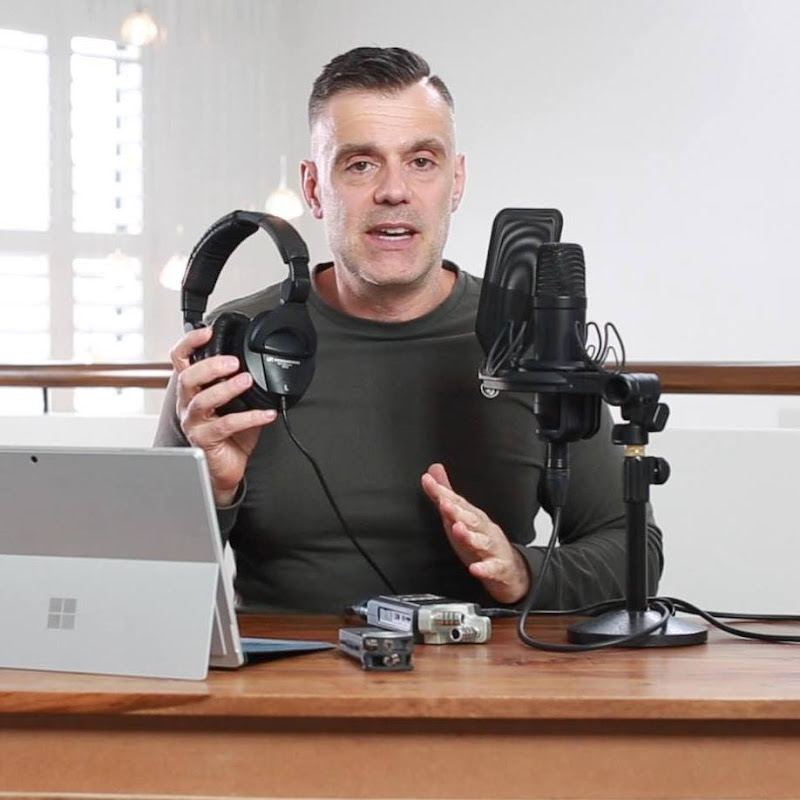
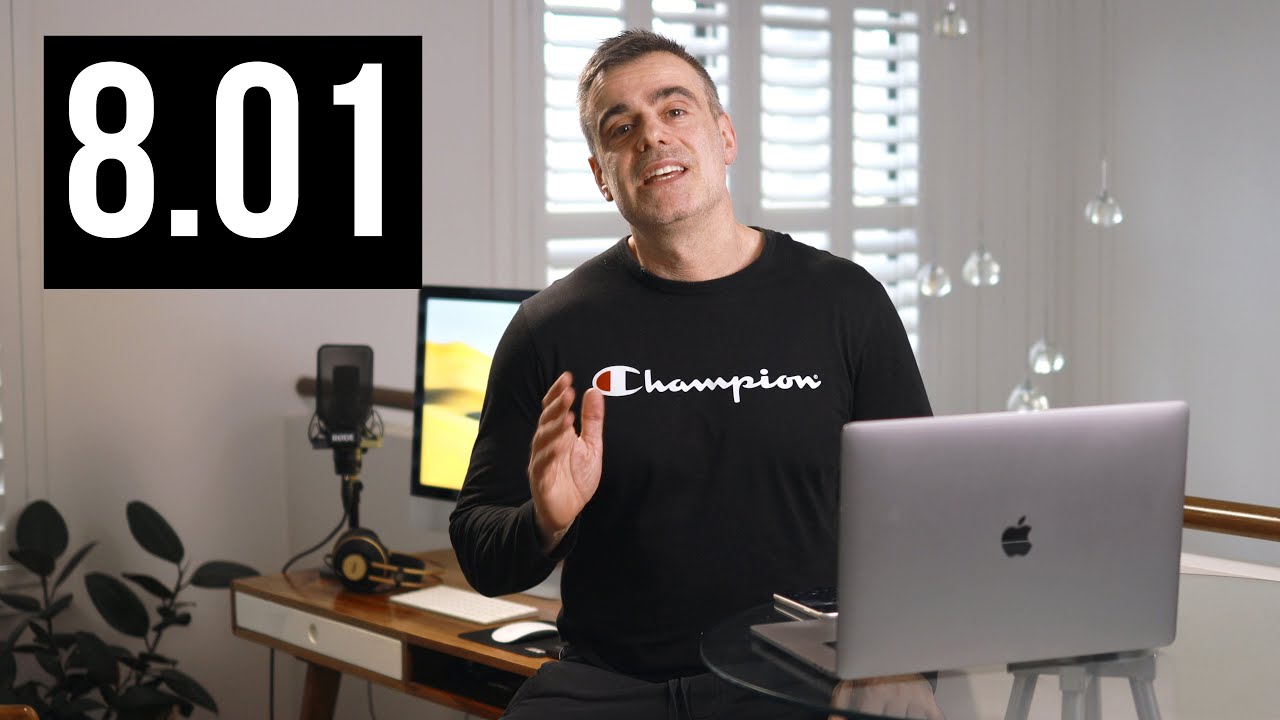

Table of Contents
Work with us